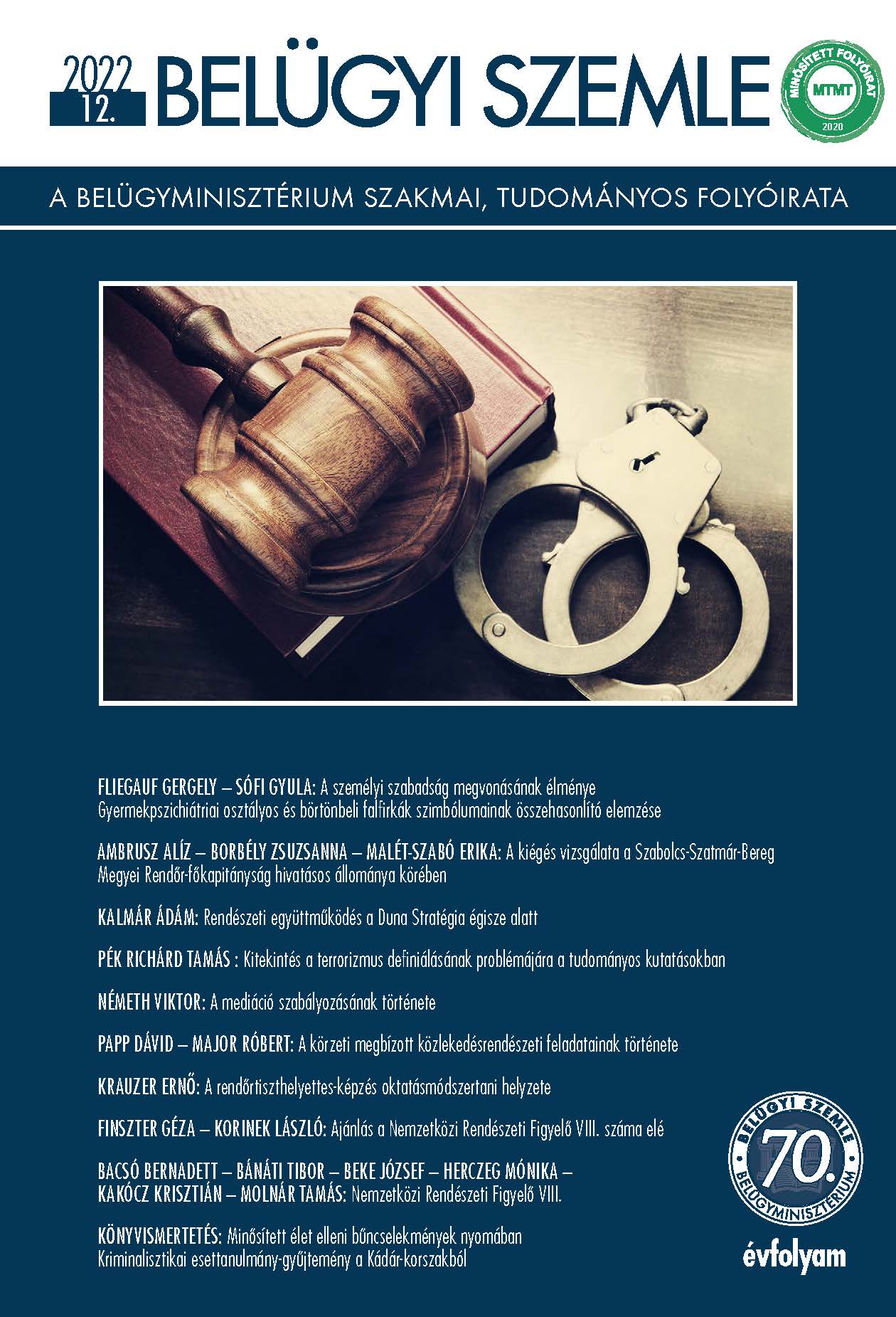Abstract
Aim: The purpose of this study is to present the history of the development and change of the complex system of traffic policing tasks of the neighbourhood police officers’ form of service.
Methodology: In connection with the initial period of the form of service, several writings have been published by contemporary experts, which provide useful information on traffic policing tasks. Besides, during the existence of the form of service, four neighbourhood police officers’ regulations have been used so far, which have changed the rules of traffic policing tasks to a lesser or a greater extent with respecting the principles of the form of service. In terms of methodology, the work is based on document analysis, in addition to the literature, the neighbourhood police officers’ regulations are also analyzed, using the method of historical and systematic processing.
Findings: Since its introduction in 1954, the form of neighbourhood police officers’ service has been imbued with the complexity and versatility of the tasks. This is especially true for traffic policing tasks, as neighbourhood police officers have been under severe pressure from all the elements of the “3E” (Education, Enforcement, Engineering) resulting from accident analysis. At the same time, in addition to road transport, the rail, water and air transport policing initially received a lot of emphasis, of which the tasks of rail and air transport still exist today, while in 2016 the tasks related to air transport were removed from the current regulations.
Value: As a result of the review of the history of development and change concerning the system of tasks of the traffic policing, we can draw conclusions regarding the purposefulness and effectiveness of the current operation.

